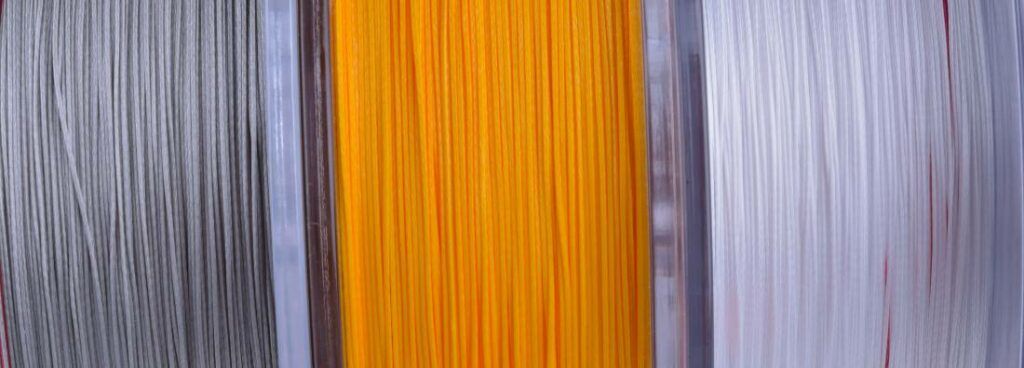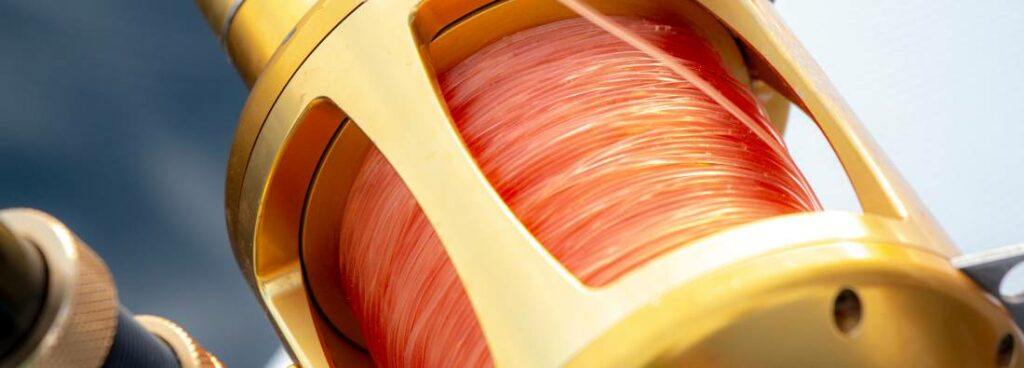Stories Worth Reeling In...
Last Updated on September 18, 2023
Are you looking for the toughest and thinnest fishing braid? No need to look any further! In this article, I’ll tell you everything you need to know about the thinnest and strongest fishing braids available.
What it is, how it is made, the available varieties, and how to pick the best one for your fishing needs are all covered.
Table of Contents
A fishing braid is a type of fishing line made of synthetic materials like Spectra or Dyneema. Braided lines are made by weaving together several strands of very thin fibers. This differs from monofilament lines, made from a single strand of fluorocarbon or nylon.
The first thing to note is how powerful fishing braids are, considering their diameter. They are, in fact, the toughest and thinnest fishing lines on the market right now.
Another advantage of fishing braid is its sensitivity. Because braided lines don’t stretch, you’ll be able to feel even the slightest bites and nibbles on your line, making it easier to set the hook and reel in your catch.
Fishing braids are excellent for fishing in rocky or weedy regions because they are highly abrasion-resistant.

One thing to remember is that fishing braids are highly visible in the water, which can spook fish in clear or shallow water. You can get around this by using a fluorocarbon leader or tying a monofilament top shot to the end of your braid.
Overall, a fishing braid is a fantastic option for anglers looking for a robust, delicate, and long-lasting line that can withstand a variety of fishing circumstances.
A top-notch braided line can help you catch more fish and have a more successful day on the water, bass fishing in freshwater or trolling for tuna in saltwater.
The thinnest and strongest fishing braid refers to a type of fishing line that is both thin in diameter and robust in terms of its tensile strength. This type of braid is often made using advanced materials, such as Spectra or Dyneema. It is designed to be incredibly durable and resistant to abrasion. Some examples of the thinnest, strongest fishing braids on the market include PowerPro Super 8 Slick, SpiderWire Stealth, and Daiwa J-Braid X8.
There are various fishing braids with varying strengths, thicknesses, and structures.
The most typical types of fishing braids are as follows:
The toughest and thinnest braids on the market are Spectra/Dyneema.
The braids, which have extraordinary strength and sensitivity, are made from Spectra or Dyneema threads.
They are ideal when you need to feel the tiniest strike while fishing in clear water.

Microfilament: If you’re looking for a strong, thin line with low visibility, microfilament braids are an excellent option. They can be challenging to tie because they are made of very thin polyethylene strands. Still, they have exceptional casting range and sensitivity.
NanoFil: This is a comparatively new kind of gel-spun polyethylene fishing braid. Because of its extreme strength and thinness, it is ideal for fishing in clear water, where you need to be able to see even the slightest movement.
| AMAZON BUYERS TOP RATED BRAID LINES | ||
|---|---|---|
 | KastKing SuperPower Braided Fishing Line | Buy from Amazon |
Top | Reaction Tackle Braided Fishing Line | Buy from Amazon |
 | Power Pro Spectra Fiber Braided Fishing Line | Buy from Amazon |
 | SpiderWire Stealth Braid Fishing Line | Buy from Amazon |
 | HERCULES 4 Strands Braided Fishing Line | Buy from Amazon |
Fluorocarbon Coated: These braids have a covering of fluorocarbon that makes them invisible while maintaining the tensile strength and sensitivity of the braided line. They are ideal for fishing in clear water where a powerful, invisible line is required.
When choosing a fishing line, there are many factors to consider. Here are a few of the most important ones:
Strength: The strength of the braid is one of the most important factors to consider. A line that can handle the fish you are after but isn’t too thick to frighten them away is necessary.
Dimensions: Throwing range and sensibility are both impacted by the braid’s diameter. Thinner lines are better when fishing in clear water, where you need to be able to see even the smallest movement.

Color: The braid’s hue may affect its underwater visibility. Dreadlocks that are vividly colored rather than more organically colored may be easier for fish to see.
Abrasion resistance: This is essential when fishing in areas with rocks or other impediments. You want a line that can endure abrasion without cracking.
Price: The plait’s price should also be considered. You want a fishing line within your price range that offers the strength and accuracy you need for your specific fishing conditions.
In conclusion, the thinnest and strongest fishing braid will depend on your preferences and the fishing circumstances.
Spectra/Dyneema braids are the strongest and lightest available, but they might not always be the best option.
Consider the previously mentioned aspects when choosing a fishing braid, and don’t be afraid to try out different types to find the one that works best for you.
Remember that the type of fishing line you use can make or break your success at the sport.
Happy fishing!